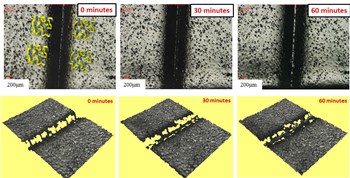Chemists unveil plastic that 'heals itself' at body temperature
Release Date 07 April 2016

Scientists at the University of Reading have led development of a new material that can repair itself at body temperature.
The new polymer material opens the door to new self-healing wound dressings for use in medicine.
Experts not involved in the study have hailed the discovery as ‘beautiful'.
While self-healing plastics have been developed before, the new material is remarkable because it is safe to humans and works at temperatures as low as 37 degrees Celsius, making it ideal for use in healthcare.
The new material, a supramolecular polyurethane, ‘flows' like a liquid when cut or scraped, filling in the damage in a couple of hours before its molecules bind together to become solid again.
The EPSRC-sponsored research was conducted at Reading and Oxford universities, and was led by Professor Wayne Hayes, from the University of Reading's School of Chemistry, Food and Pharmacy, which has been at the forefront of research into self-healing plastics.
Watch: Plastic that heals itself (YouTube video)
Professor Hayes said: "Anyone who has had to replace an old bandage knows it can be very painful and can easily damage healing skin.
"Our work shows that this new material not only repairs itself at body temperature, but is non-toxic, so is an ideal material for use in healthcare settings. This material could maintain a sterile barrier as part of a wound dressing while constantly repairing and renewing itself, reducing the need for replacement.
"It could even be adapted to naturally break down over time, similar to dissolvable stitches, making it suitable for internal use in surgery as well as for dressing wounds."
Other potential applications include self-healing vehicle paint, or as coating for mobile phones, which could repair scratches or scuffs automatically with only mild heat.
The research is published with open access in the journal Chemical Science.